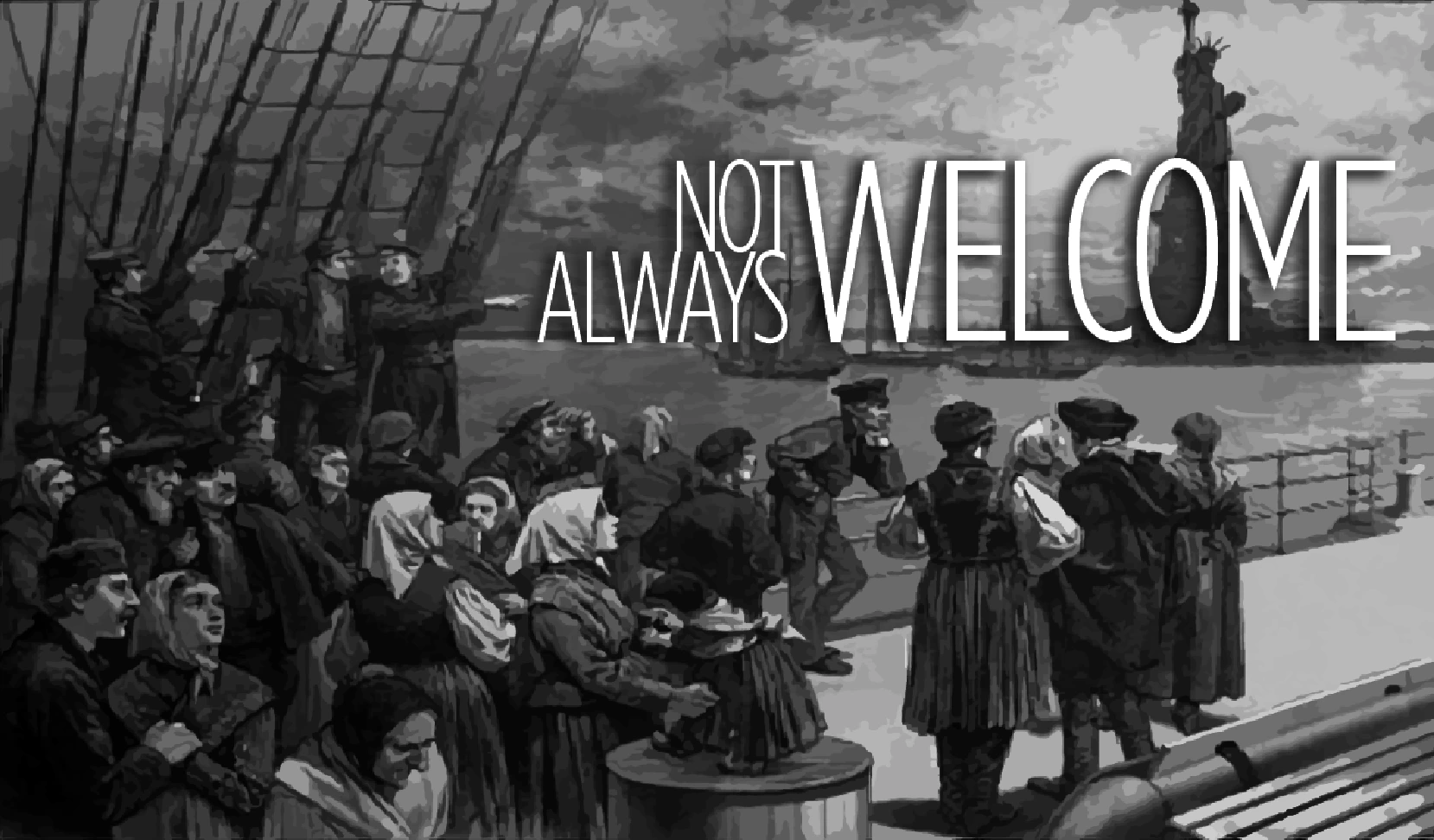Americans have a love-hate relationship with immigration. We love to talk about when our families moved here and we love the cheap labor provided by immigrants. But we are often suspicious of immigrants, especially during times of war, recession or political upheaval.
A Chinese Exclusion Act — signed into law 135 years ago today and aimed at preventing Chinese who traveled back home re-entry into the U.S. - is an example of the winds of change in American immigration policy.
A History Of U.S. Immigration Law
1700-1800s
1790
The Naturalization Act is the nation's first attempt to create uniformity among states in rules governing who can become a U.S. citizen. “Free white persons” of “good moral character” can win citizenship after two years of residence. It would be another 80 years before Black people could become citizens.
1819
The Steerage Act calls for reporting of passenger manifests of all arriving ships be turned over to customs officials and then the secretary of state.
1875
Criminals, prostitutes and Chinese contract laborers are excluded from immigrating.
1882
The Chinese Exclusion Act suspends immigration of all Chinese workers for the next 10 years, bars Chinese immigrants from becoming U.S. citizens and provides for the deportation of Chinese immigrants who were in the U.S. unlawfully. The act is renewed for another 10 years in 1892 and again in 1902.
Oct. 7, 1898
A second Chinese Exclusion Act further restricts Chinese immigration to the U.S. and prohibits Chinese immigrants who return to China from re-entering the U.S. President Grover Cleveland says he welcomes immigrants who he thought would assimilate into Western culture but has little tolerance for those who he believed would not.
1891
The Immigration Act creates the Bureau of Immigration within the Treasury Department, provides for deportation of immigrants in the country illegally and adds polygamists to the list of inadmissible aliens.
1900s
1903
The Anarchist Exclusion Act bans political extremists from entering the U.S.
1906
The Naturalization Act centralizes immigration and naturalization in one bureau within the Commerce Department and adds knowledge of English as a requirement for naturalization. Forms and fees are set into place.
1907
The Immigration Act excludes those with physical or mental disabilities, children not accompanied by parents or those who have committed a crime with “moral turpitude.”
1917
Literacy tests are put in place for immigrants older than 16 years and fees are put into place to discourage potential immigrants.
1921
The Emergency Quota Act imposes limits on immigration from specific countries and an overall cap on immigration.
1924
The National Origins Act reduces immigration quotas. The U.S. Border Patrol is created, as well.
The end of World War I brings an influx of immigrants to the U.S., igniting a backlash. The author of the 1924 Immigration Act, Rep. Albert Johnson, R-Wash, declares, “It has become necessary that the United States cease to become an asylum.”
The bill attempts to reduce immigration from Russia and eastern Europe via quotas and an increase in the head tax. Immigration is encouraged from Britain, Ireland and Scandinavia but discouraged from Italy, Japan and the Slavic countries.
The Japanese, in particular, are outraged. Anti-American sentiment is fanned there. One Japanese citizen kills himself outside the American Embassy in Tokyo as a protest.
President Calvin Coolidge signs the bill into law May 26.
1940
The Alien Registration Act requires registration and fingerprinting of all foreigners older than 14 years.
1942
The Bracero Program brings in up to 5 million temporary agricultural workers from Mexico over the next 22 years.
1943
Immigration of Chinese workers is allowed to resume and people of Chinese origin are again eligible for naturalization. This is extended to Indians and Filipinos three years later.
1948
The Displaced Persons Act allows for immigration from countries annexed by the Soviet Union.
1952
The McCarran-Walter Act eliminates race as a basis of exclusion but re-establishes annual immigration quotas from countries outside the Western Hemisphere.
1965
The Immigration Act abolishes quotas based on race, ancestry or national origin. Regional numerical restrictions are kept.
1975
The Refugee Assistance Act creates a program to place Vietnamese and Cambodian refugees in the U.S.
1986
The Immigration Reform and Control Act allows most unauthorized immigrants to apply for legal status but creates penalties for employers who knowingly hire unauthorized immigrants.
1990
The Immigration Act raises the annual cap on immigration for several years.
1996
Rules for denial of citizenship and removal from the U.S. are strengthened and border enforcement is beefed up.
2000s
2002
The Enhanced Border Security and Visa Reform Entry Act sets up new procedures for review of visa applications and sets new standards for documents.
2012
The Barack Obama administration announces the Deferred Action for Childhood Arrivals — or DACA — program. It will stop deporting unauthorized immigrants who entered the U.S. as minors and grants them a path to become permanent residents.
2017
The Donald Trump administration rescinds DACA. Replacement legislation is introduced but not passed.
2023
A federal judge declares DACA unlawful. Individuals can no longer apply but those already in the DACA program can renew their status.
